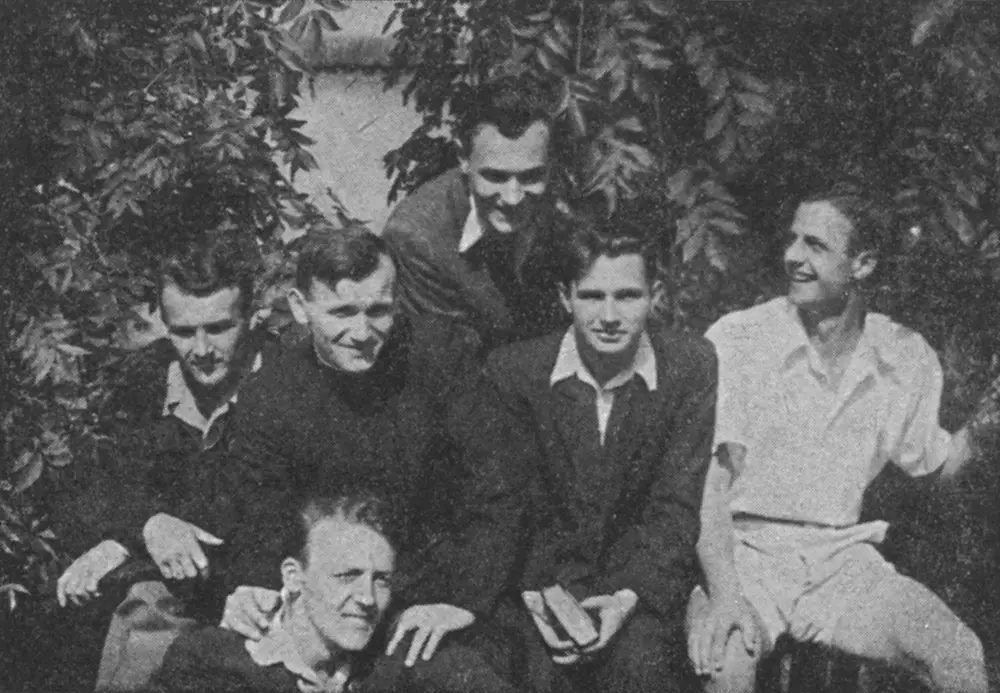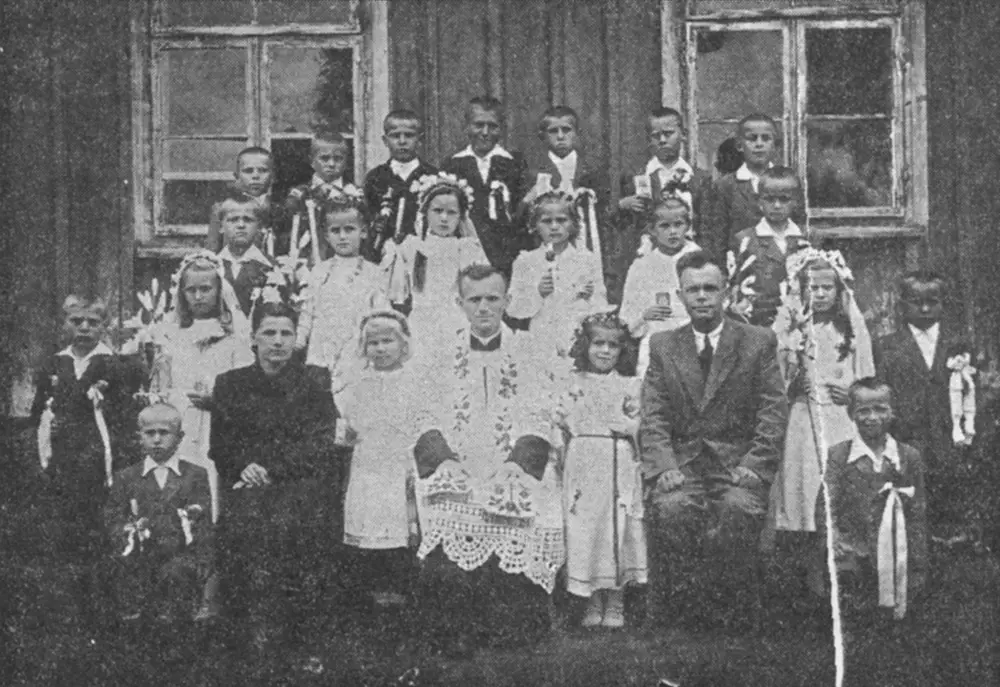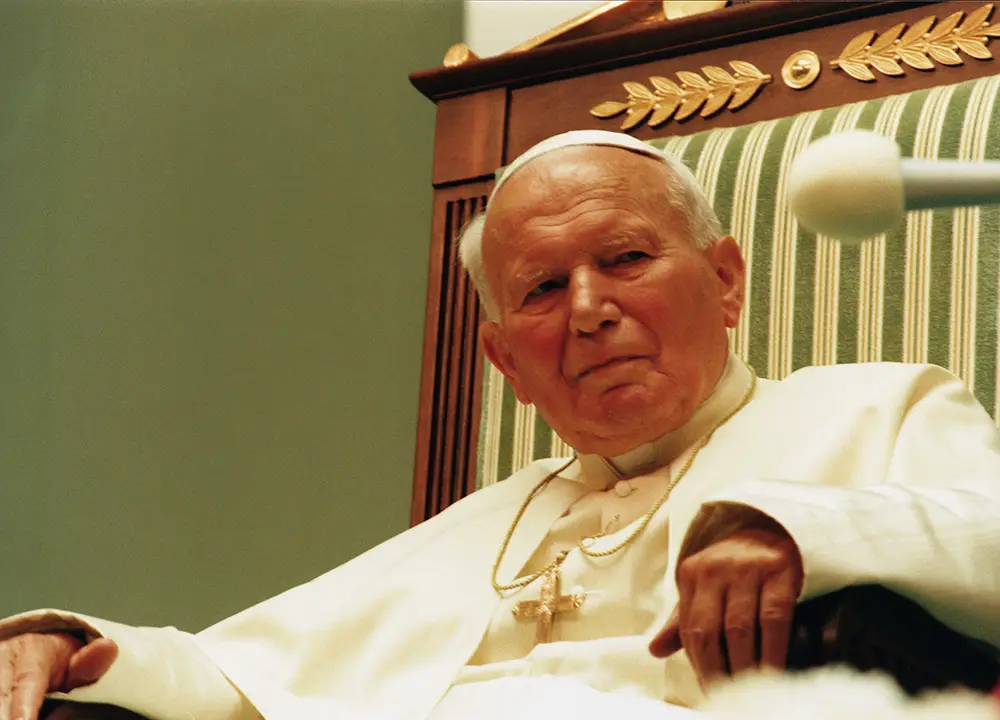
St. John Paul II, the traveling Pope, left an indelible mark on the history of the Catholic Church and the entire world. In order to understand the magnitude of his pontificate and his person, we must be familiar with the most important dates in the life of St. John Paul IIThe Pope's pontificate, those key moments that marked his path from his native Poland to the Holy See. On October 16, we commemorate the anniversary of the beginning of his pontificate back in 1978.
Join us in this chronological journey through the life of this great saint who inspired the creation of the Pontifical University of the Holy Cross in Rome, where more than a thousand seminarians, diocesan priests and religious men and women from all over the world are trained each year, who then return to their countries of origin to train others.

The life of Karol Wojtyła, the first name of St. John Paul II, was marked from the beginning by the great events of the 20th century and by a very difficult childhood. His youth was forged between the Nazi occupation and the subsequent Soviet domination of Poland, experiences that profoundly shaped his character and his faith.
To delve deeper into these early years, we recommend this video that summarizes his life:
The election of a non-Italian cardinal surprised the world and marked the beginning of one of the longest and most significant pontificates in history, lasting 26 years, 5 months and 18 days. The most important dates of the pontificate of St. John Paul II are numerous and of great significance, some of which are highlighted below:

In his almost 27 years of pontificate John Paul II made a total of 240 trips on the five continents: 104, outside Italy; and 146, carried out in Italy. If we translate this into kilometers: 1,247,613 kilometers, or 3.24 times the distance from the Earth to the Moon. The circumference of the Earth is about 40,075 km, this distance is equivalent to 31.13 laps to the planet.
In this video we leave you some of his most significant moments and gestures:
The last years of his life were marked by Parkinson's disease, which he bore with a fortitude that touched the world. Despite his physical limitations, he continued his mission to the end.
Here is a list of the encyclicals that St. John Paul II published during his pontificate, 14 in total. It includes the Latin name, the main theme and the year of publication:
| Title (Latin) | Subject | Ayear of publication |
| 1. Redemptor Hominis | Jesus Christ, Redeemer of man. The centrality of man in the mystery of Redemption. | March 4, 1979 |
| 2. Dives in Misericordia | The Divine Mercy of God the Father. | November 30, 1980 |
| 3. Laborem Exercens | Human labor and the social question (90th anniversary of Rerum Novarum). | September 14, 1981 |
| 4. Slavorum Apostoli | In commemoration of Saints Cyril and Methodius, Apostles of the Slavs. | June 2, 1985 |
| 5. Dominum et Vivificantem | The Holy Spirit in the life of the Church and the world. | May 18, 1986 |
| 6. Redemptoris Mater | The Blessed Virgin Mary in the life of the Church. | March 25, 1987 |
| 7. Sollicitudo Rei Socialis | The Social Concern of the Church (20th anniversary of Populorum Progressio). | December 30, 1987 |
| 8. Redemptoris Missio | The permanent validity of the missionary mandate. | December 7, 1990 |
| 9. Centesimus Annus | The social question, one hundred years after Rerum Novarum. | May 1, 1991 |
| 10. Veritatis Splendor | Fundamentals of the moral teaching of the Church. | August 6, 1993 |
| 11. Evangelium Vitae | The value and inviolability of human life. | March 25, 1995 |
| 12. Ut Unum Sint | On ecumenical commitment. | May 25, 1995 |
| 13. Fides et Ratio | On the relationship between faith and reason. | September 14, 1998 |
| 14. Ecclesia de Eucharistia vivit | The Eucharist in its relationship with the Church. | April 17, 2003 |
To know the most important dates of St. John Paul II immerses us in the life of an essential figure for understanding the 20th century; a man who lived and brought the Gospel to every corner of the planet with a message of hope, love and the defense of human dignity.